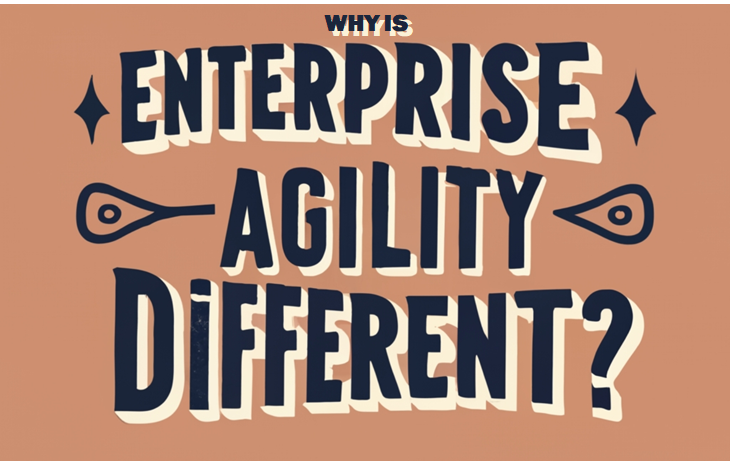While agile mindset and approaches have transformed how we develop products and software, many companies still struggle to adapt and respond quickly in a world of accelerated change and exponential markets.

Traditional agile methods tend to focus on improving development workflows and customer value. But in today's landscape, business models face potential disruption— requiring a more comprehensive approach.
This is where Enterprise Agility offers a new perspective. Rather than a specific framework, it provides an entire ecosystem to strengthen organizations. One key difference is the emphasis on a scientific foundation. Enterprise Agility incorporates the latest research on human behavior, neuroscience, and strategic change. This knowledge allows companies to take an evidence-based approach when introducing new mindsets and capabilities.
Another distinction is the holistic view of value creation. Most agile methods prioritize customer value above all else. But Enterprise Agility promotes a TriValue Company Model that considers customer, company, and workforce wellbeing. By finding an optimal balance between these three areas, organizations can build sustainable growth.
Enterprise Agility also equips companies with frameworks to continuously reinvent themselves. The Future Thinking model helps teams scan for signals of disruption and imagine alternate business models. The Enterprise Agility framework offers tools to develop the technical, structural, outcomes, social and mental agility needed to adapt.
Unlike other agile techniques, Enterprise Agility provides flexible models that can integrate with existing systems. This enables a customized approach tailored to an organization's needs and situation. The principles and frameworks complement popular frameworks like Scrum, Kanban and SAFe.
While agile methods and ways of thinking sparked great innovations, they have limitations in an exponential world. Enterprise Agility offers the next generation of thinking, backed by science and a systemic view. With the ability to sense disruption and reinvent business models, companies can thrive in times of unprecedented change.
